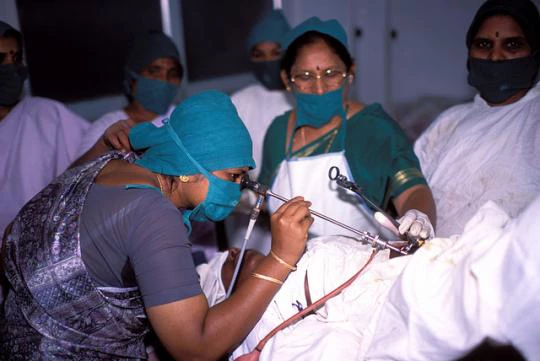
Though the Indian government has steadily increased funding for its health sector, per capita allocation is still low; reform is thus critical to effectively utilize the available budget.
The underlying question is: Given a set of resources, how do you procure goods in a way that achieves value for money and maximum efficiency?
In India, procurement of health sector goods has been a major concern for the government. Drugs and medical supplies are not procured and distributed in time, and this interruption in the delivery of services in health facilities affect the general population’s health outcomes.
Technology is an important tool to address these concerns. The Tamil Nadu Medical Services Corporation (TNMSC) set up in the State of Tamil Nadu had successfully demonstrated a cost-effective model: basically, an IT system is an integral part in the supply chain infrastructure to support management, decisions, and adequate attention to quality in drug procurement. This model was advocated for adoption with suitable modifications to the Union and many State Governments.
India’s Ministry of Health and Family Welfare (MoHFW) is annually procuring health sector goods such as vaccines, family planning goods, drugs for malaria, TB etc. that are valued at about US$ 200 Million for use by the State Governments. However, the inefficiency in procurement has led to complaints of shortages and wastages. Inaccurate quantification, delays in tender decisions, payment delays, inadequate monitoring etc. are responsible for this.
In 2011, these deficiencies were presented to the Cabinet of Union Ministers, who were convinced and approved the need for reform.
Based on the Cabinet decision, the Health Ministry set up the Central Medical Services Society (CMSS) on the lines of the TNMSC to procure and distribute supplies to States through web-connected warehouses in State capitals. The Society has financial and administrative autonomy to take decisions on procurement related issues. It also has finalized standard bidding documents and has also floated its first tender.
An IT vendor has been identified to take up the IT work and a quality control framework has been put in place. Its warehouses are being equipped with necessary storing and warehousing equipment, which will distribute to the States the items that are procured by the Ministry. Since the warehouses will be connected through the IT system, it will be possible for the Society to monitor the inventory in warehouses preventing stock outs and wastages.
Many State governments have also adopted a similar reform process. Fortunately, drug budget, which was a major concern in low-income States like Orissa, Bihar and Rajasthan, is no more an issue, since the State governments, keen to ensure continuous availability of drugs to those accessing public health facilities and services, have substantially increased their budget for drugs.
The reform had been initially implemented only in the States of Tamil Nadu and Kerala. With the support of the World Bank, the State governments of Rajasthan, Bihar, Orissa, Chhattisgarh, Jharkhand and Haryana have set up Corporations similar to the TNMSC to eliminate shortage and wastage, and to enhance the quality of drugs through careful selection of vendors and an excellent quality assurance system.
They are now fully conscious of the need for an Essential Drug List, standard tender document, proper supply chain infrastructure, a proper IT system for inventory control and management decisions.
Noting the success of these entities, many more States are expected to adopt similar reform, with the support of the national government. If all State governments implement the model, there will be a chain of interconnected supply chain infrastructure throughout the country that will facilitate a smooth flow of medical supplies to health facilities.
What do you think? Share your comments below.


Join the Conversation